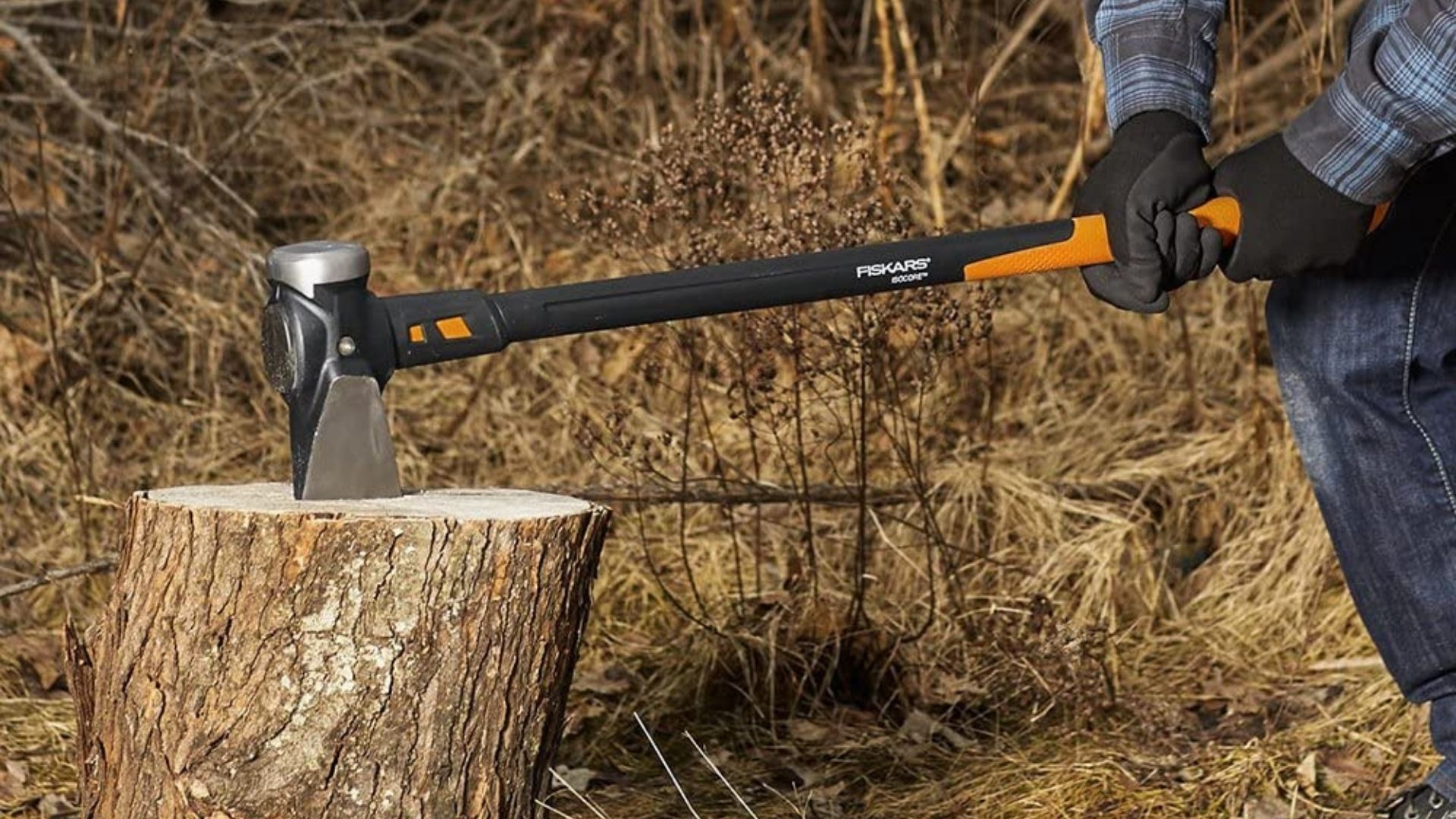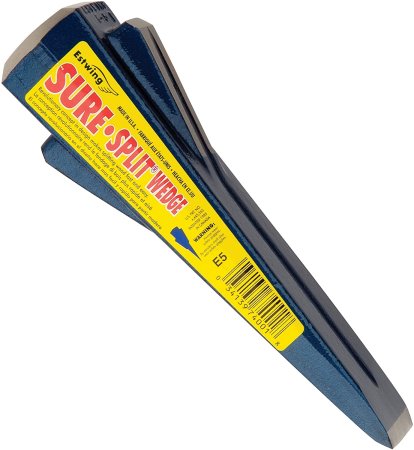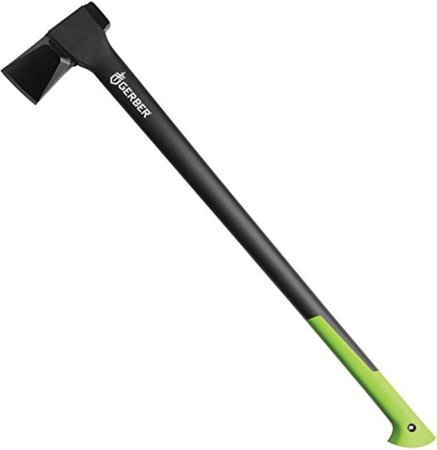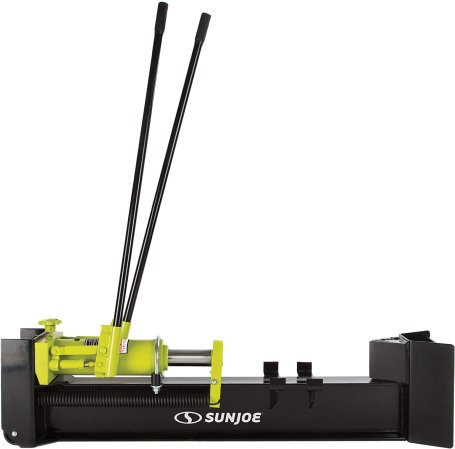

We may earn revenue from the products available on this page and participate in affiliate programs.
Were you born wearing steel-toed boots? Does your wardrobe consist entirely of flannel shirts and blue jeans? Do you brush your teeth with snowmelt and use pine pitch for deodorant? Are these concepts preposterous but a little bit relatable at the same time? If so, you’re the kind of person who needs to split their own logs. Free yourself from the shame that comes with buying firewood that’s been split for you. Let us show you the way to lumberjack heaven.
Chopping firewood is one thing, but splitting it is an important step that requires the right tool for the job. Adding a maul to your collection can enable you to make quick work of logs and prepare for winter like an expert survivalist. Even if you never travel the forest felling trees with a single swing like Paul Bunyan, you can still split cords of firewood by hand if you have the right maul. That’s where I come in.
When people find out how much joy I get from splitting firewood, they usually look at me like I’m some kind of social deviant. How can manual labor be fun? For starters, it’s a great way to release stress without winding up on your command blotter. Splitting wood is also an exercise in technique, so you can take genuine pride in getting better at it. I’m also of the opinion that fires smell better when you don’t pay someone else to split the logs for you. Regardless of your reasoning, it’s time to add a maul to your tool set. Traditional mauls look and function like sledgehammers; big, heavy, two-handed affairs. You can also get one-handed mauls or simple iron wedges for light duty. There are even hydraulic wood splitters that I contend will not provide the same lumberjack experience, but will process firewood quickly and easily nonetheless.
Husqvarna splitting maul
Collins splitting maul
Estwing splitting wedge
Fiskars IsoCore maul
Gerber power splitting axe
Sun Joe Hydraulic Log Splitter
Why should you trust us
When I was a kid, my family lived in a house built in 1780 and cooked on a wood-burning stove (and walked to school uphill both ways; all that jazz). Every time we lost electricity–which was often–we heated the house by burning wood and stacked logs to keep the fires burning around the clock. Needless to say, as soon as I was big enough to swing an axe I earned a place on the wood-splitting crew. I’ve got the callouses and fancy moves to prove it. That childhood gave me a special appreciation for central heating, but it also brings back fond memories every time I score a satisfying one-swing split. There’s no way I would tolerate a substandard maul, so you can bet I wouldn’t recommend one to you, either.
Different kinds of wood splitting mauls
Mauls are simple tools, but there are still decisions to make and priorities to set before you buy one. The style that works best for you will be determined by how much wood you split, what kind of wood you’re dealing with, and how much money you want to spend. Spend a few minutes familiarizing yourself with a few key differences before you buy.
Full-size
Most mauls feature a long, straight handle and a heavy metal head. Handles are typically around three feet long and are held with two hands. Heads are much thicker than axe heads and don’t need to be that sharp. Remember that axes need to cut across the wood grain, whereas mauls drive in between fibers and split them apart along natural seams. Maul heads often feature a striking face on the reverse side for extra force when you need it.
Traditionally, mauls were built using wood handles that could easily be replaced when they wore out. Metal shims driven into the handle would create a tight fit in the eye of the head. Today, composite handles can last longer and weigh less than wood. Some even have padding for vibration damping.
Compact
Compact mauls can be a great option for people who don’t split wood very often or only split wood at a remote campsite. These tools are usually 12 to 18 inches long and are held with either one or two hands. They’re most likely to come in handy if you go car camping or travel in an RV, but want to enjoy a fire pit in the evening. Their compact size makes them lighter and more portable, but they’re still too heavy to justify a place in your hiking pack.
These mauls don’t generate near as much force as their full-sized alternatives. You’ll have to work harder for the same results, and ultimately be limited by your equipment. Compact mauls split the difference between full-size and wedges, but they don’t outperform either. We’re not saying they can’t work, but none earned a place on this list.
Wedge
Wood-splitting wedges take a resourceful approach, and plenty of people swear by them. Rather than learning how to swing a maul with precision, you can take your time driving a wedge into a log and finishing the job with a sledgehammer. Because these tools stay in contact with the wood, they’re often easier for beginners to use effectively. Think of wedges as a maul with the handle removed.
On the downside, you’ll need to own a sledgehammer already or purchase one separately. Once you know what you’re doing, wedges are also slower to use than a traditional maul. That doesn’t mean you should rule them out, though, and we found one that will serve you well.
Features to look for in a wood splitting maul
Head
The first feature you’ll need in a good splitting maul is a broad head. Yes, a sharp edge is helpful, but having one isn’t nearly as important as it is with hatchets, axes, and tomahawks. The shape of a splitting maul’s head forces logs apart and breaks them along natural seams in the wood’s fiber.
Weight
You’ll also notice that maul heads are heavy like a sledgehammer. Many have a flat striking face on the opposite side. This weight reduces the amount of effort you need to expend to generate enough force to get the job done. Most of the work involved with splitting wood actually comes from raising the maul, not driving it home.
Handle
Finally, compare the materials used to create each maul’s handle. Wood is a proven classic, but synthetic handles can be more durable and last longer.
Do you need a wood splitting maul?
If you burn wood in your backyard fire pit or in-home fireplace, you’ll save a lot of money by splitting your own wood rather than buying it at the local hardware or grocery store. A little bit of wood goes a long way, and it definitely helps to have some size variation to choose from. Axes are great for chopping but their slim profile means they aren’t cut out for splitting duty. You need a heavy, wide-bodied maul for that.
A good maul takes much of the work out of splitting wood. With a heavy splitter, you can focus on lifting the maul and keeping it on target rather than generating a forceful swing. The wide shape forces dry logs apart in a snap. Trust us and use the right tool for the job.
- Easily split logs into firewood
- Separate wood into varying sizes for easy fire-starting
- Build muscle and look awesome in flannel
- Refine your technique and impress your city friends
Pricing ranges for wood splitting mauls
- Less than $30: At the low end of the price spectrum, you’ll get one-handed mauls and standalone wedges. These work in a pinch but get tiresome in a hurry.
- Between $30 and $50: Mid-level mauls strike a balance between price and durability. You can find full-size mauls in this price range, but they won’t have the frills of top-tier equipment.
- More than $50: Premium mauls are what you want for heavy-duty use. If you split large amounts of wood, you’ll want the features and durability that come with this kind of price tag.
How we chose our top picks
It would be great to hand-test all of these mauls. You can never have too much firewood and we love a good workout. Unfortunately, there isn’t always time or availability for us to put every piece of gear through its paces. When that happens, we rely on the thousands of consumers who have already purchased these products and shared their experiences online. Combine their reviews with our knowledge, and you can get a good idea of which products are best for you.





